Picture Stockton... catching macroinvertebrates to assess water quality
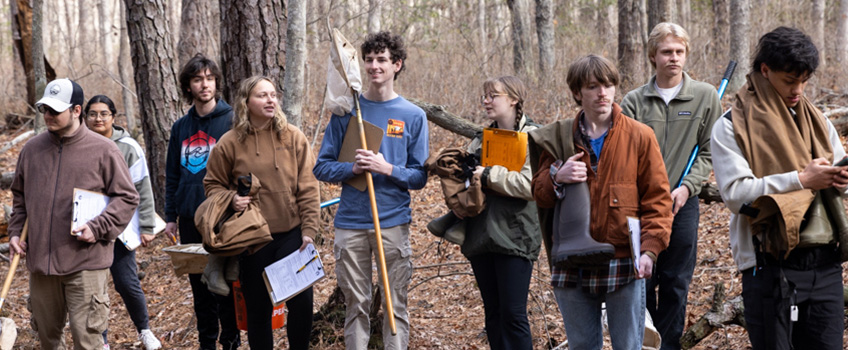
Galloway, N.J. - A lesson on water quality introduced students to the diversity of macroinvertabrates below the surface.
Vashti Mahadeo, an Environmental Science teaching specialist, took her students in Ecological Principles to Morses Mill Stream, a tributary of Lake Fred, to look for aquatic bugs that serve as biological indicators of stream health.
Lynn Maun '04, Fred Akers and Brooke Fisher '21 from the Great Egg Harbor Watershed Association joined the class to give an overview of macroinvertebrates and demonstrated how to survey the stream during a field experience.
Aquatic macroinvertebrates (creatures without a backbone that can be seen without magnification) can tolerate varying levels of pollution.
Students wore waders and used dip nets to catch macroinvertebrates hiding in vegetation along the banks and burrowed in decaying leaves at the bottom.
With identification sheets that assign index values to different species based on their tolerance to pollution, the students were able to assess the stream's water quality.
Physical, chemical and biological parameters can be used in habitat assessments.
"You can look at the water and see if it's clear or cloudy -- that's a physical assessment," said Akers, operations manager for the Great Egg Harbor Watershed Association.
"Chemical testing has a limitation. When we go to the stream, the water is going to be flowing. When you take a sample from a moving stream, and you do chemical analysis, when you come back an hour later, there's going to be different water there," he added.
Macroinvertebrates cannot move quickly to escape pollution, making them reliable indicator species.
Follow the students into the field in the photo story below.
Photo story by Susan Allen
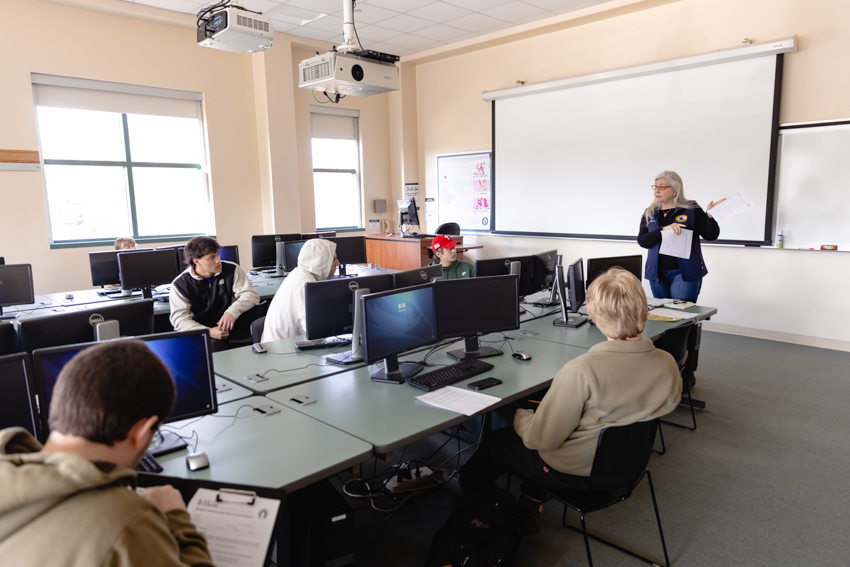
Lynn Maun '04, Fred Akers and Brooke Fisher '21 from the Great Egg Harbor Watershed Association gave an overview of macroinvertebrate biodiversity and how they are biological indicators of watershed health.
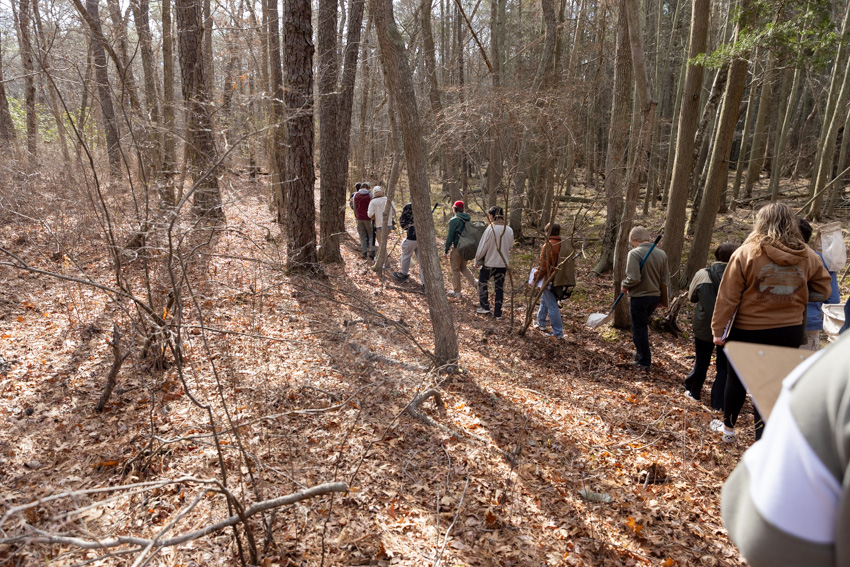
The students walked about a quarter mile into the woods to access a section of Morses Mill Stream.
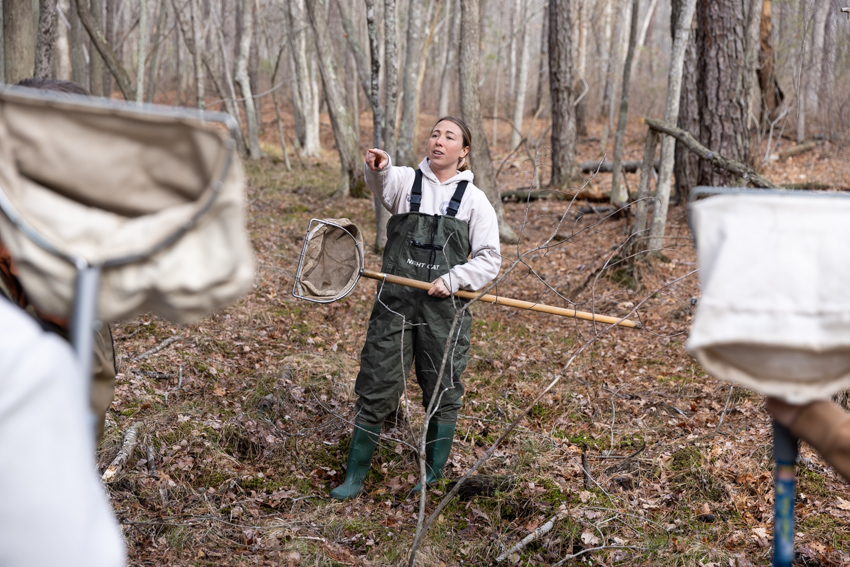
Brooke Fisher '21 demonstrates netting techniques for catching aquatic life. Trekking through the forest reminded her of her favorite Stockton class, Dendrology, where she learned about tree identification in one of Stockton's largest classrooms, the campus forest.
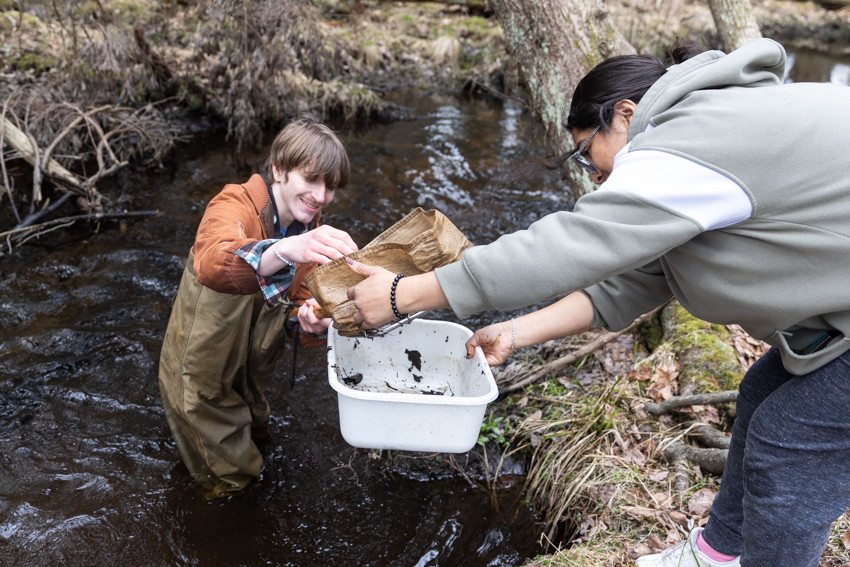
Students scoop decaying leaf and organic material into bins to search for bugs and other aquatic life.
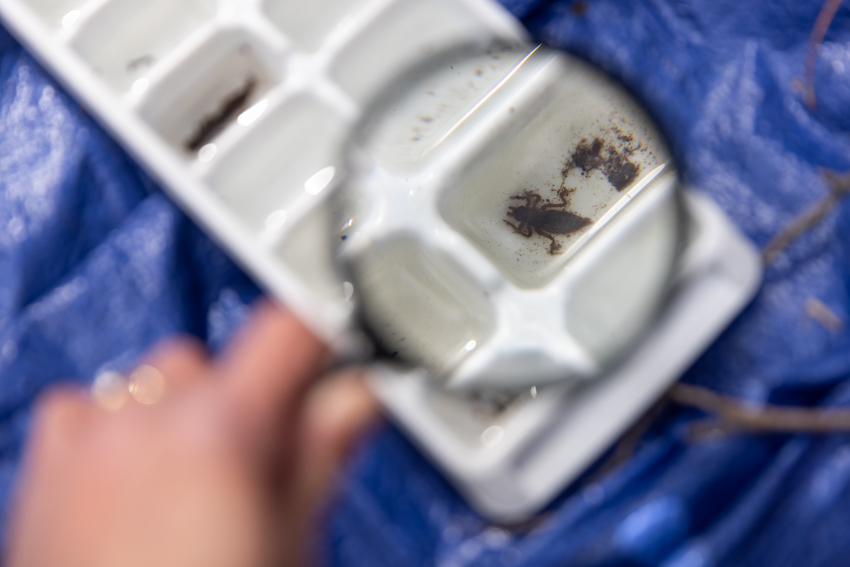
A student looks at a dragonfly nymph under a magnifying glass.
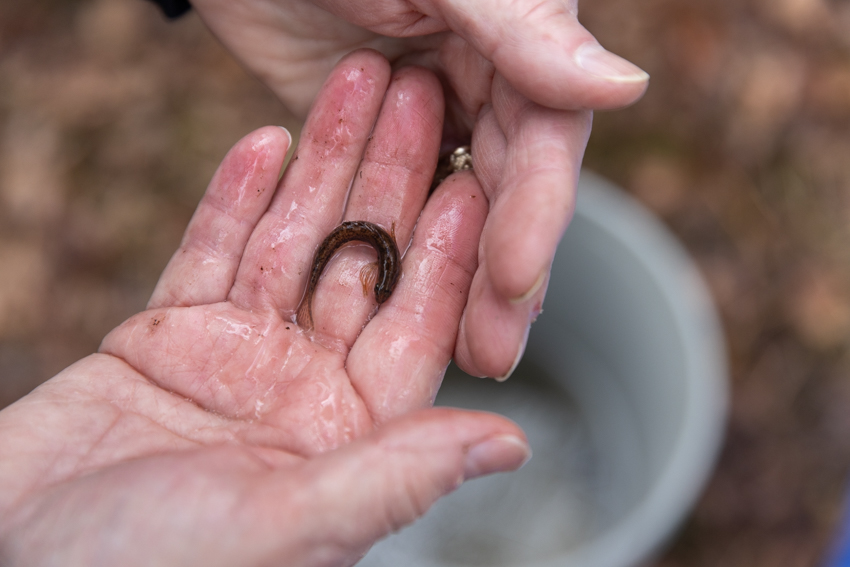
Eels and fish were also caught like this swamp darter.
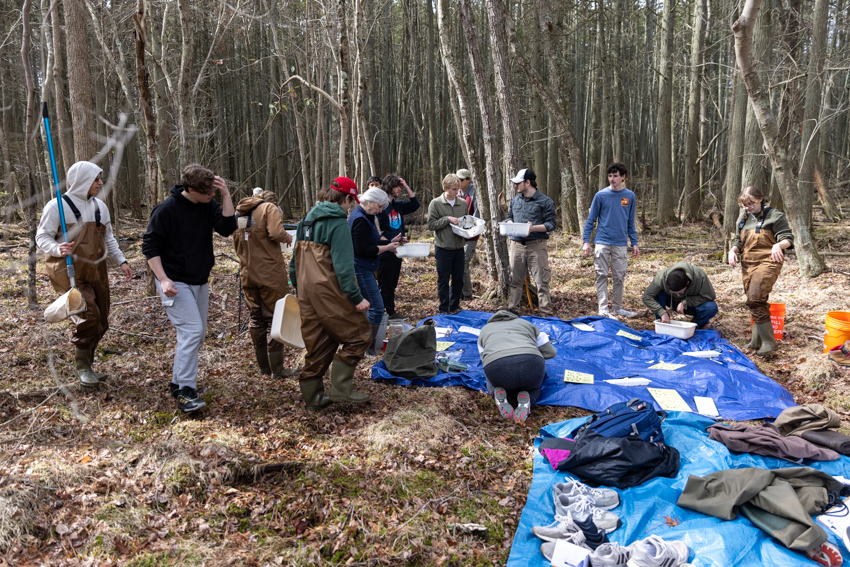
The class gathers to identify what they caught.


